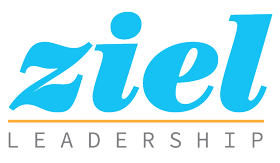Moving Corporate Leadership From Home to The Office
Many managers found it easier to give caring, consistent feedback to family members at home. But when they return to their corporate leadership roles in the office, this empathetic accountability seems much harder achieve. Why?
Bring accountability into the office with our corporate leadership training. Find out more.
This related question came up in a recent leadership development program I was facilitating — why is it so much easier to be a compassionate caring leader at home than at work? The answer seems obvious: At home, we’re more in our familial roles where holding people accountable in compassionate ways comes naturally. But that raises another question: How can we shift that mentality to the office?
Corporate Leadership with Compassion
At the program, I met Cory. He’s a frontline supervisor at a manufacturing plant in a place filled with big-hearted, Minnesota Nice™ people. He was in the second session of his learning path on corporate leadership. The class focuses on leading with compassion. We delved into how to give consistent, timely feedback. This builds trust and deepens relationships.
Near the end of class, I asked for feedback. Cory looked a little puzzled. He crossed his arms over his bright yellow vest. Then he explained that he easily applied what he learned in class at home, but not at the plant. He wasn’t sure what to do about it. We started exploring together and stumbled into an insightful realization (that wasn’t surprising).
Existing vs. Emerging Archetypes in Corporate Leadership
At home, we live up to expected archetypes of highly valued, behaviors. We are supposed to be empathetic and compassionate. That includes behaviors like listening intently. We provide empathetic feedback when needed. It comes naturally to celebrate successes and coach through struggles. When a whole family does this, they are compassionately accountable to each other, for each other.
Traditionally, the corporate leadership archetype utilizes:
- Strict control
- Rigid
- Transactional interactions
- Rational
The notion of empathy and openness are foreign to the existing archetype. (Even if they lead to more than a transactional kind of trust and relationship.) Even the notion of accountability is skewed.
Over the last several years, an abundance of research and articles inspired a new archetype. It emphasizes soft skills such as:
- Emotional intelligence
- Empathy
- Compassion
- Vulnerability
Those qualities own the airwaves of training rooms everywhere. They are not necessarily embedded into most corporate cultures. They are more aspirational than in common practice today.
No wonder what was easy to put into practice at home was far more complicated at work. Archetypes are part of our culture and language. They inform our expectations of ourselves and each other. And we act accordingly. Archetypes inform the safe action to take – not necessarily because it works better. We show up in the way we believe is expected. Our “at home” archetypes” are kind, empathetic and vulnerable. This makes accountability easier. Our “at work” archetypes tend to be more transactional, emotionless and rigid.
Solution for Successful Convergence
The solution is to more deliberately change the archetype of what it means to be a leader at work. I wrote about this at length in another blog. To sum up: leadership must be authentic, empathetic, and vulnerable. We must practice a holistic sense of accountability for positive and negative contributions. Managers must be consistent and humble, and willing to have difficult conversations. By providing these things, the corporate leader can grow their influence and trust. Organizations with these kinds of values demonstrate higher levels of agility and success.
On the other hand, organizations without them demonstrate lower levels of employee well being that leads to serious consequences. Research from Mayo Clinic shows that managers have a higher impact on people’s overall well being than their physician.¹ There are 20 percent more heart attacks on Monday than any other day of the week. This suggests the existing archetype is not serving us well – inside or beyond the walls of the organization. We know that leading differently is worthwhile.
Beyond retaining talent, leaders have a profound impact on people’s overall well being and the well being of the organization. Empathy, compassion, being present, and caring for your team doesn’t mean abdicating accountability and giving feedback. To the contrary, they become an expression of how much we care about each other. What Cory and I bumped into, was the challenge of showing up differently than what we think people expect. Challenging those expectations, the existing archetype, takes courage. It takes a willingness to be vulnerable.
That particular challenge became clear that day in class – do we have the courage to show up differently? To break with the existing archetype and try something different? I’m curious to learn what you think.
